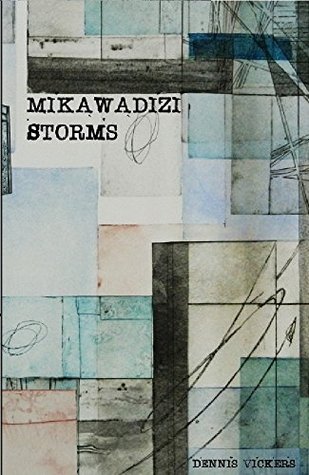Freelance journalist Evie Arnold agrees to cover the emerging conflict between mining magnate Clive Gready, who plans to dig an open-pit mine in the Mikawadizi hills, and La Roche Verte Indian Nation, who intend to stop him. As she watches and records, the conflict spirals from serious to severe to ominous. and finally explodes into an epic battle between good and evil.
Mikawadizi Storms casts bold characters into conflicts bristling with magic and smoldering with contradictory world views.
Goodreads description
Every month I review an independently published book by a member of the Magic Realism Books Facebook Group. Indie books get a lot of stick about quality, but in my experience indie magic realist books are often very good indeed. Maybe that is partly because the people on the Facebook Group are genuinely interested in magic realism and want to know more and maybe it is because the nature of magic realism attracts a certain type of writer - one that thinks about his/her work and more generally about the nature of reality. Dennis Vickers falls into both categories.
at the College of Menominee Nation, a tribal college located in north-central Wisconsin and, whilst he's not a member of an Indian Nation, this has clearly influenced the content of his book. The book contrasts the two world views of the Indian community and the white community to the land and nature. This split is literally depicted in the characters Ed and Ward Cormmercant. Edward Commercant is of mixed French/Indian descent and as a result of the conflict between his two backgrounds splits into Ed and Ward - an interesting magic realist concept.
The abuse of the environment by the white mining consortium and its defence by the La Roche Verte Indian Nation and supporters is at the heart of the novel. Early on a contrast is made between the white approach to the land of ripping it open and tearing out the treasures they seek and the Roche Verte who harvested only the silver that fell from the walls of a secret cave. The danger of digging too deep is made clear towards the end of the story when nature takes her revenge, but I will not spoil the ending for you by explaining more.
The central character in the book is the reporter Evie Arnold. Thus we get to hear and see both sides of the story, although Evie shares the writer's bias in favour of the Roche Verte. Evie too is conflicted - in her case in her attitude to her sexuality and having children. This brings her to the magical house of Lotta Moore, where another, this time European, shamanism is active.

2 comments:
I'm glad you enjoyed Mikawadizi Storms. I should explain a bit about the number of characters. In retrospect I probably should have warned readers on the cover or in the preface. Most fiction presents a story organized around a protagonist or perhaps a few closely related characters. My other novels are like that and I've gone back to it for the one I'm writing now. For Mikawadizi Storms, though, I wanted something different, to organize the story around the mining project and the controversy it generates. This situation affects many people in many ways, not all of them connected or related.
A couple of decades ago Exxon proposed to mine near the headwaters for the Wolf River (where I live), the so-called Crandon Mine. Strong opposition developed and ultimately succeeded, a rare success with our political climate. I didn't live here, but I've noticed how many of the people I meet now were involved in fending off that mine, one way or another. Some knew each other, or knew of each other; some didn't. That's how it came to me such events have a broad spread across people and telling the story of the event must involve telling many smaller stories.
Thank you for the explanation of your thinking, Dennis. You are in good company - Marquez is criticised for the size of his cast in 100 Years of Solitude.
As a reviewer I can only say what my experience of reading the book was and I hope that is clear from how I phrase my comments.
Post a Comment